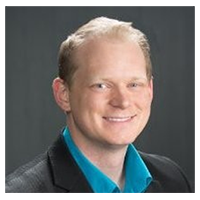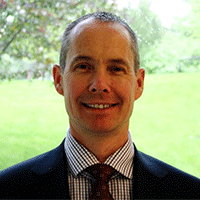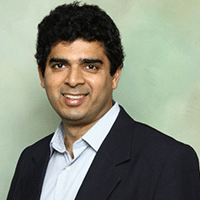Keynote
Navigating Requirements Ambiguity and Volatility - One Step at a Time
Presenter:
Travis Stevens
Orpyx |
At its core, the discipline of Engineering is about the application of math and science to solve a problem. Sounds simple right? What could possibly go wrong? To the initiated, everything. The above simple statement does not reflect the hard truth of engineering, which is that often the problem being solved is an ill defined moving end target, or those problems that seem well defined, or similar to previous situations, have nuance that make them unique onto themselves. So how does the unknown, the ill defined and the nuanced manifest itself? It is the missed deadline, the ballooning budget, the failed product, the defective device, and we see it, read about it, experience it everyday. The problem seems easy to solve, doesn’t it? If we write better requirements that took into account reality, or had better project management, or did more upfront planning, all these issues would go away, or at least the vast majority of them. Well, the one thing we can be sure of that our ignorance is infinite and our knowledge is finite, and because of this we need to accept the fact that what we think is the truth will evolve over the course of a project. Therefore, in order to be successful, it is necessary to learn how to deal with these sources of uncertainty, to be adaptable, to manage risk and validate the assumptions, both implicit and explicit, that underly or affect our requirements. I will explore the holistic approach, which involves both culture and process, adopted by Orpyx on their journey to commercialize a first of its kind medical device. |
RE Tutorial
Requirements Engineering: Precepts, Practices, and Cosmic Truths
Presenter:
Karl Wiegers |
Software methodologies and fads come and go, but certain facts about requirements are timeless. Regardless of the development strategy or lifecycle used, successful products must be built on a foundation of well-understood, adequately documented, and clearly communicated requirements. This presentation describes some definitions and several foundational principles—cosmic truths—about requirements engineering. Summaries of some key requirement development and management practices also are presented. The goal is to provide a better appreciation for the central issues and the complexities of establishing a solid base of requirements for each project. |
Industry Presentations 1
Agility in Requirements in an Increasingly Complex World
Presenter:
Simon Orrell
snowdolphin inc. |
In this brief talk we’ll look at the difference between ‘complicated' and ‘complex' and what the implications are for system requirements in a world of ever-increasing complexity We’ll also have a look at some examples of requirements in non-software domains where agility is employed to address complexity. |
Industry Presentations 2
Minimum Viable Product - How to Stack the Requirements Deck in your Favor
Presenter:
Chris Lambert
Cortex |
Requirements form the basis for a successful implementation in any project. Often any project is faced with conflicting goals, uncertainty and ongoing change that can put its success at risk. What can we do to mitigate risk? How can we ensure faster time to market while producing an effective solution that satisfies the needs of many stakeholders, often with conflicting requirements? How do we ensure value and return on investment sooner in the project cycle while gaining better buy in from the users of a new system or integration? In this discussion, we'll speak to these and other key aspects which impact every project no matter it's scope. |
Industry Presentations 3
Microsoft’s Datacenter Community Development Initiative: How Does Shared Value Create Shared Benefits? Gathering Requirements for Community and Business Outcomes
Presenters:
Rahul Joshi and
Mary Fifield
Microsoft |
With more than 100 datacenters in small towns and major metropolises, Microsoft’s cloud computing operations span the globe. While the technological innovation promised by cloud computing is already having transformative, positive effects for many people, some communities are concerned about the negative impacts of large datacenter facilities on local natural resources and the relatively few jobs that will be created to offset these costs.
As Michael Porter and Mark Kramer posit, healthy societies are necessary for healthy markets, and vice versa. Microsoft has a responsibility to promote to the well-being of communities in which we operate for the mutual benefit of society and the company. But how do we determine what kind of support to provide, and how do we measure the community and business impact? In other words, what kind of requirements should guide our work, and how will we know that we have satisfied them? Our emergent community engagement model draws from Porter and Kramer’s “shared value” framework and research on social cohesion and community leadership. In a panel discussion, we will describe how we developed this model, what we have learned so far, and the possibilities for engaging community stakeholders not only to addresses complex societal issues but to increase their capacity to drive their own solutions and improve our ROI. |
Survey Results
Practitioners' Perception of RE Research Relevance
Presenter:
Xavier Franch |
The relevance of Requirements Engineering (RE) research to practitioners is a prerequisite for problem-driven research in the area and key for a long-term dissemination of research results to everyday practice. To better understand how industry practitioners perceive the practical relevance of RE research, we are conducting the RE-Pract project, a collaborative project involving 10 researchers from all over the worlds. We designed and distributed to practitioners a survey asking participants to rate their perceived practical relevance of 418 RE papers, published between 2010 and 2015 at the RE, ICSE, FSE, ESEC/FSE, ESEM and REFSQ conferences. We got 147 answers which we are currently analyzing. The talk will present the first, preliminary results and will show the plan for the next months. |
Tool Experience
Enhancing SE Activities with a Global KM Approach
Presenter:
Elena Gallego
The Reuse Company |
Did you know that having a high understanding of your requirements can save you up to 1.5M€ for a project with about 300 requirements and 50 system interfaces? Requirements documents contain both structured (requirement objects, tables, …) and unstructured information (comments, additional information, …), this complicates the understanding of the specification’s purpose. With MBSE, organizations are trying to overcome the issues from misunderstanding natural language requirements. However, finding the methods and tools to organize information from technical specifications in combination with the models and architectures is a real challenge. Whether we like it or not, we communicate with natural language, and thus we need to improve the engineering capabilities to understand requirements unambiguously, in addition to models or any other piece of information. To do so, a number of industries are now developing frameworks that enhances Requirements Engineering activities with a Global Knowledge Management approach, allowing the PLM and ALM solutions to understand the meaning (semantics) of textual requirements and their related information (i.e. models), and thus reducing the ambiguity and inconsistencies in the documents and promoting a common understanding of the different project assets. |
Industry Presentations 4
Blockchain in Oil and Gas
Presenter:
Geoffrey Cann
|
Blockchain, also known as distributed ledger technology, is a simple technology construct but with far-reaching impacts, and it is coming quickly to oil and gas. Blockchain combines encryption, distributed computing, decentralized architecture and cloud computing in a novel way to create new business models that do not require trust between counter parties. Blockchain is thus poised to overhaul legacy ways of working in oil and gas that involve assets, ownership, identity, money, contracts and of course, trust. Beyond transformation of business processes (both operational and commercial), blockchain combines with other technologies such as the internet of things, artificial intelligence and automation in more profound ways to create fundamentally different business models. For example, blockchain and artificial intelligence working together on a powered device allows that device to purchase and settle power purchases based not just on load but the price of power. Early use cases of relevance to oil and gas include commodity trading, asset tracking, royalty and venture accounting, but other examples in areas as diverse as shipping, financial transactions, used equipment trading and of course, currency, also underscore the profound possibilities presented by this technology set. |
Industry Presentations 5
A Picture is Worth a Thousand Words
Presenters:
Barb Peace and
Lauren Johnston
WestJet
|
As WestJet prepares to enter the world stage next year with our Dreamliner 787 planes; a business class of service offering and nothing but opportunity in front of us, we are faced with the next level of growth as a company, therefore our processes must grow as well. As a society we are more restless, our attention spans are shorter, we want information in shorter more concise forms. As business analysts, we must respond to these conditions so we can continue enabling change within the organization. Our projects are more complex, there are multiple inter-dependencies and the stakes are higher between success and failure. We must be certain in what we want to do as an organization, and thus spend time on the things that matter and will make a difference to our guest, our people and our bottom line. On projects, we need to be clear on what we are doing; what are we introducing, changing or removing. As business analyst’s our go to tool is the business requirements document. In this new world, we ask ourselves, is this the best way to start? Are we focusing our efforts on eliciting the right requirements, or are we spending unnecessary time waiting, churning, and reworking? Are we representing the information in the most meaningful way? Let us take this opportunity to revisit the toolsets we use as business analyst’s and determine if we can help to improve the quality of information that drives requirements so that the projects are set up for success, and we spend our effort on doing the right things. |
RE Tutorial
Design Thinking for Requirements Engineering
Falk Uebernickel, Daniel Mendez and
Jennifer Hehn |
Design Thinking is a human-centered problem solving approach that applies rapid prototyping, iterative development cycles, and interdisciplinary teamwork. By structuring the fuzzy process of developing innovative ideas, Design Thinking is a promising approach to creatively elicit human-centered requirements for software-intensive systems. This tutorial provides a hands-on introduction to Design Thinking based on practical examples to foster lively discussions on the potential and challenges in applying Design Thinking in the participants’ own settings. In particular, real project examples from large, (mostly) European enterprises will showcase practices on how to utilize Design Thinking for Requirements Engineering and to integrate it with agile approaches like Scrum on a day-to-day basis. After the tutorial, the participants will have access to all materials, templates, and methods on our website for further usage. |


